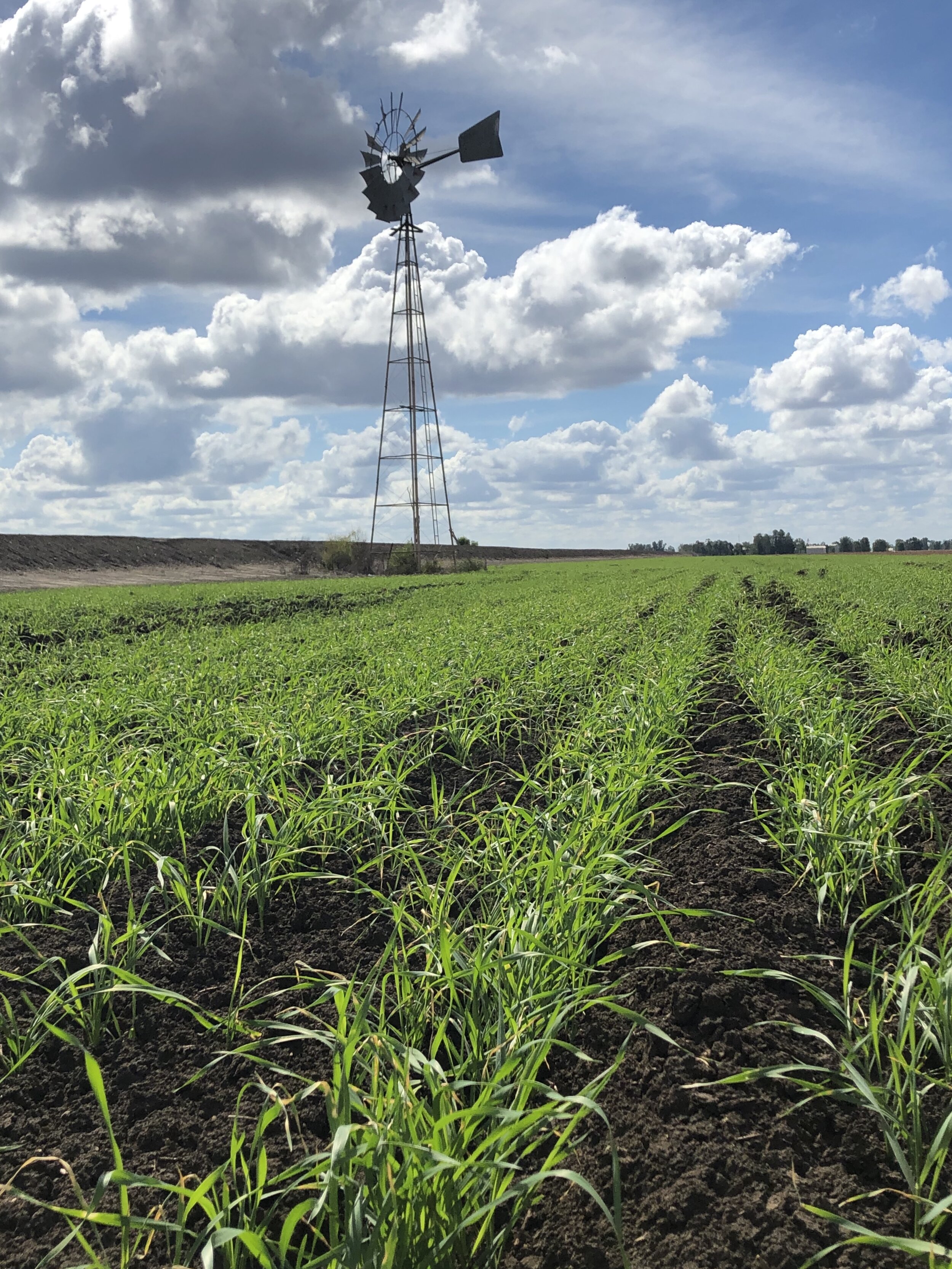Farmer climate focus - Nigel Burnett
/Nigel and Beth Burnett run a mixed broadacre cropping farm near Emerald, QLD. With a mixture of both irrigated and rain grown cropping enterprises, the climate is a key management consideration. Nigel shares with us how he is preparing for an altered summer cropping program based on the favourable 2020-21 outlook.
Nigel Burnett
Emerald, Qld
Location snapshot
Catchment: Fitzroy Catchment (Comet River sub basin and Nogoa River sub basin)
Altitude: 156m
Enterprise: Broadacre cropping (irrigated & dryland).
Winter cereals and legumes, Summer (Cotton and sorghum)
Rainfall: Wet season (Oct-Mar): 76% rainfall
Cool season (Apr-Sep): 24% rainfall
Seasonal rainfall climate drivers: Niño 4 ocean indicator seems to be the one to watch for Emerald
El Nino-Southern Oscillation (ENSO) is the key climate driver, however, ENSO impacts are very weak post-January to May.
Very little impact from the Indian Ocean dipole in this location - strongly ENSO related climate influences
What are your ‘go-to’ sources of climate/weather information?
OCF and OzForecast for weekly weather forecast. Jon Welsh’s seasonal climate analysis, WXMAPS (GFS) for a broad picture of what's going on and the BOM to round it all out.
How do you consider climate in your farm management? Consideration of climate plays a big part in our farm management strategy. It is a key driver in our decision making and is integral to our risk management strategy. We use it mainly to get a feel for where things are heading in terms of our seasonal outlook for our region and the rest of the Eastern cropping zone. The weather conditions we receive during fallow and in-crop are out of our control, but we can manipulate our production system to maximise the opportunity provided by a favourable seasonal outlook or manage our exposure to risk from a poor seasonal outlook. Some of the management decisions which we make to respond to the climate outlook are planting decision, planting timing, rotation, variety and maturity, fertiliser program and stubble management.
Can you share a climate success (or failure) story with us?
I was on the Cotton Industry Awards judging trip in April of 2016 and and was fortunate to spend some time discussing the seasonal outlook with Jon Welsh on our visit to Narrabri. Jon was very bullish on the rainfall outlook for winter for the whole eastern cropping zone and after analyzing other climate forecasts and considering other important management drivers, I came back to Emerald and planted wall to wall chickpeas including all of our irrigated fields. Luckily this turned out to be a very good decision as that winter was very favourable in terms of rain and temperature. It was easily our most profitable winter crop that I can remember growing ever. Now I am sure Welshy will be the first to advocate not to plant your whole farm to one particular crop on his advice of an improvement in the seasonal condition. But it was a very important consideration among other drivers such as soil moisture, commodity price, water availability for irrigation and cash flow.
There was early talk of a wetter winter, however you haven’t received much rain after your wetter than average Feb/Mar. How did your winter crop pan out?
Our area certainly missed the wetter winter memo and it has been a tough winter cropping season for Central Queensland. We planted 3000Ha of wheat and chickpeas on predominantly rain grown country and a small amount of semi irrigated wheat. Our team had to chase moisture deep for planting the wheat and the chickpeas using a moisture profile from the last significant rainfall from late February/ early March. The profile wasn't consistent and plant stand wasn't ideal, further contributing to the effect of the tough season on the very average yields. However, even with the benefit hind sight, I would still plant those crops for the new crop stubble benefit.
What are you thoughts for this summer crop?
We have received 50-60mm in the last week of October across our entire area and with the improved seasonal forecast we are feeling more and more optimistic by the day. If the rain continues and we fill our soil profile during November, we will plant a significant portion of our area to irrigated and rain grown cotton. Although August has become the preferred option to plant irrigated cotton in our region, I think there is still enough time to grow a good crop of cotton in CQ that is planted in November and harvested in May.
Have a farming climate story to share? Please contact us.







